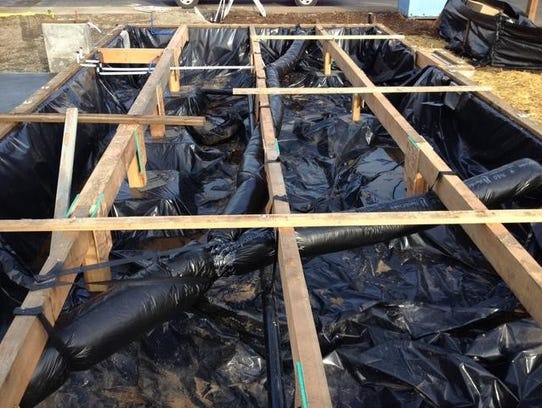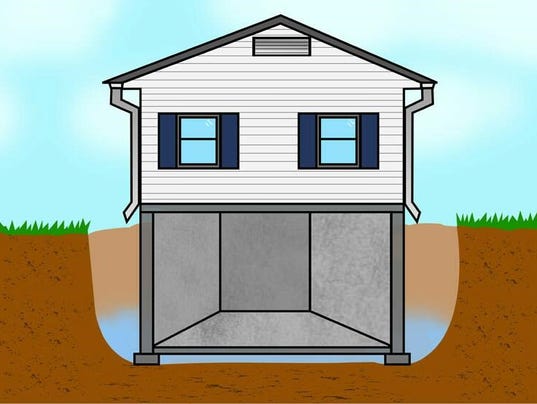Waterproofing Starts at Construction
WATERPROOFING DURING CONSTRUCTION
NEW HOME WATERPROOFING BENEFITS
As a company, John’s Waterproofing enjoys educating the public about the benefits and importance of a healthy home. This education does not end with that of our customers; John also teaches continuing education classes for that of the reality community. In these continuing education classes, John likes to start at the beginning of a project: the construction of a home. The following is a brief description of how the process of construction on a home begins.
The first step to building a home begins with the location. The developer will scope out a piece of property, being either a specific plot or that of a piece of land, much like a field. The excavation begins with various tools, but all ending with the same result; a large hole in the ground representing that of a pool. The ground is then broken up to place the home. The Pacific Northwest is known for its clay-like soil and heavy sediment. The specific characteristics of this soil cause what is called the Clay Bowl Effect. Which in short means that though the ground is broken up to house your home, the surrounding areas are still hardened in the clay form. Now, rather than allow this to fill up with water and make it into a little swimming hole, or an irrigation pond, we build houses in them. The main issue with this is that of the foundation.
The second step in building a home is the foundation. When the foundation is first poured wood forms are placed together and joined by metal bars known as cleats. This creates a form in which the concrete can be poured into to hold the foundation of the home in place while the concrete settles. Once the concrete cures, the wood forms are removed and you’re left with a concrete foundation. What do you think happens to the metal bars that were holding the wood form together? Those metal bars or “cleats” are now left in your concrete foundation forever. The remainder of the home is built and dirt is filled back in around the house, landscape to suit.
Remember due to the Clay Bowl effect, water from rains and runoff is going to seek the path of least resistance. Which is going to be that soft backfield dirt around the home. Now the metal cleats are what is affected by this process. What happens to metal when it’s in contact with water for extended amounts of time? It rusts. This leaves holes in the foundation where those ties use to be. In essence, your house is built with walls full of holes in the middle of a pond. It isn’t just the house being built in the middle of a pond, the construction of the home adds to the problem.
According to code today, you are required to install a footing drain. While this drain is intended to keep water out, it doesn’t take into account that water now surrounds the house and that these drain lines fill with sediment and clog over time. Crawlspaces, however, are not required to have drains despite the same present water issues.
This can seem like a lot of information at once; and for those who are not equipped with knowledge in construction the following is an example of a situation our production manager happened upon one afternoon. He drove past this construction site. He stopped to take pictures and told me about what he found when he got back.
From the very start of building, little concern is given for under the home. The vapor barrier was laid, and heat ducts installed, everything was left exposed to the rain. Now before the construction of your home, the vapor barrier is full of water and the heat ducts are saturated with moisture as well. From here your home will be built on top of this mess, and debris will also be laden under the home.
When you’re building a new home, with a basement consider applying an external waterproofing solution such as Paraseal, as opposed to the traditional damp proofing. The investment will save you thousands of dollars and extend the life of your home. If you are building a home with a crawlspace, consider fully encapsulating your crawlspace. It is another way to safeguard your home from water issues as well as save you up to 30% in heating and cooling costs per year. The benefits of waterproofing your home are extensive, they begin with your wallet and end with personal health.

